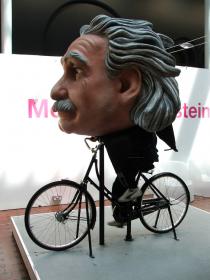Remote science labs offer students the opportunity to perform scientific experiments and test legitimate hypotheses using top-of-the-line, high-powered, modern instruments that are, typically, only available in privately-funded research facilities.
 At the end of February, BCcampus brought together the top thinkers, innovators and instructors directly involved with both NANSLO and RWSL for a series of information-sharing and planning sessions. Faculty and staff from Thompson Rivers University (TRU), North Island College, College of the Rockies, Kwantlen Polytechnic University and the Colorado Community College System discussed their course overviews, learning outcomes, successes and challenges – all with an eye on the future.
At the end of February, BCcampus brought together the top thinkers, innovators and instructors directly involved with both NANSLO and RWSL for a series of information-sharing and planning sessions. Faculty and staff from Thompson Rivers University (TRU), North Island College, College of the Rockies, Kwantlen Polytechnic University and the Colorado Community College System discussed their course overviews, learning outcomes, successes and challenges – all with an eye on the future.
The in-person meetings helped to highlight similarities between the various science lab programs but also articulate the best practices and methodologies emerging within this specialized pedagogic community.
For post-secondary students enrolled in NANSLO consortium online courses in either physics, biology of chemistry, remote science labs offer the opportunity to perform scientific experiments and test legitimate hypotheses using top-of-the-line, high-powered, modern instruments that are, typically, only available in privately-funded research facilities. These students use computers for their inquiry, data acquisition, analysis and communication.
But it’s not just post-secondary students who gain valuable, hands-on experience, using advanced scientific instrumentation. Through the BC-Integrated Laboratory Network, younger scientists (high-school students) are able to perform scientific experiments like CIA – Chemicals in Action: Atomic Absorption Spectrometry or Do the Paint Samples Match.
In part, these live demonstrations and experiments are meant to bring meaningful scientific experimentation to remote areas of the province where this type of experience would otherwise be impossible. But, more importantly, these labs are all about:
- Igniting passions in tomorrow’s generation of physicists, chemists and engineers.
- Increasing access and deconstructing our strongly held, pervasive assumption that science is an elite, urban discipline.
- And, changing the face of science education using technology.
A recent article in the Huffington Post, written by 17-year-old Catherine Wong, a finalist in the 2013 Intel Science Talent Search, captures the “Whoa” moment of discovery for science students:
I fell in love with engineering through research: science framed as playing, breakable and touchable and real. Within the classroom, it can be easy to get trapped in the details. Indeed, it is just these pieces — the facts and equations — that lie at the heart of science, form the baseline on which everything new can be built. But there is something else at the heart of science, too. Classroom science may be science, yes, but what draws scientists back to the lab for another day is the real thrill in experimentation without pre-written answers — building what has never been built, science where there is always the giddy chance, however improbable, that the next result might just rock the world.
MAKING CONNECTIONS FOR THE REAL WORLD
The two-day session reinforced the need for the RWSL instructor community to share their signature pedagogy with peers. Doing so will help these courses gain acceptance in the broader science community and help drive, not only enrollment, but spur the expansion of course offerings across the province. Colleagues also committed to sharing learning outcomes and experiments with the goal of validating the pedagogy.
A key action item included making the connection with industry and employers to ensure that science graduates have the skills and critical thinking necessary for the real world.
[iframe width=”420″ height=”315″ src=”//www.youtube.com/embed/Bgaw9qe7DEE?rel=0″ frameborder=”0″ allowfullscreen]
For further reading:
photo credit: only alice via photopin; cc
Posted by BCcampus Editorial Staff
